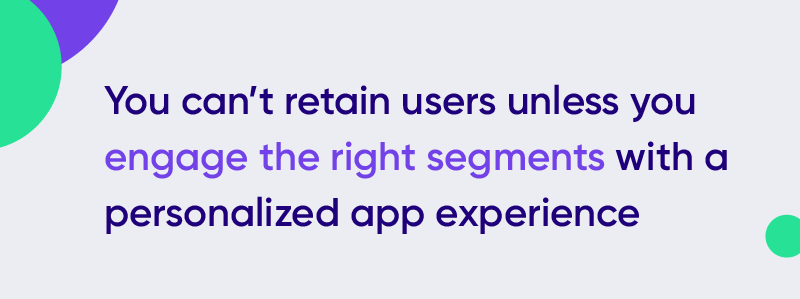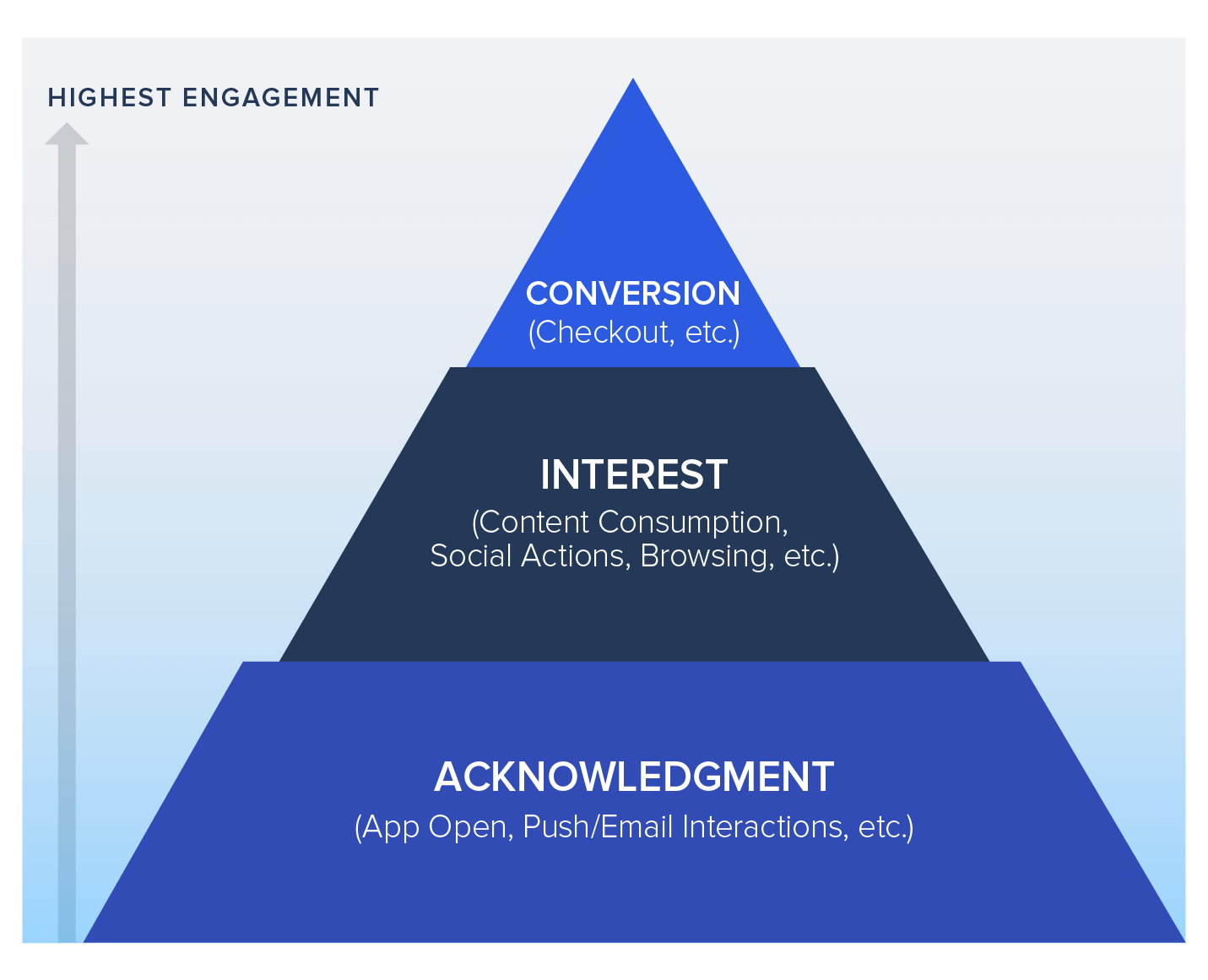What’s your app’s monthly retention rate?
If you don’t know the number off the top of your head, you’re not giving retention the focus it requires.
Retention needs to be your #1 priority. It can’t be an afterthought. It shouldn’t be a figure on a dashboard or spreadsheet somewhere that you glance at once in a while.
Why? Because the days of buying new users are over. Acquisition-first is simply not a sustainable model for business growth.
The Leaky Bucket is Sinking Your Business
According to research firm Statista, the 30-day app retention rate was only 6.48% in 2021. And the organic 8-week app retention rate was only 4.5%.*
Every dollar counts — and customer acquisition costs are rising steadily.
For new and upcoming apps with limited marketing budgets, solving retention means higher Customer Lifetime Value. Higher CLTV means you can afford to spend more money on acquisition campaigns, growing your app exponentially.
For established apps, solving for retention is a major lever for improving profitability. The rewards of investing in retention speak for themselves: even a small boost in retention has a massive impact on your business.*
- The probability of selling to an existing customer is between 60% and 70%.
- The probability of selling to a new customer is only between 5% to 20%.
- Existing customers are 50% more likely to try your business’s new product.
- Existing customers are also 31% more likely to spend more on their average order value with your business.
Having worked with over 10,000 apps around the globe, I’ve seen what it takes to crack the code on customer retention. And if there’s one factor that underpins every successful growth story, it’s this:
Smart user segmentation.
Why Segmentation is the Key to Retention
Effective segmentation is the most significant differentiator when it comes to improving retention.
Customer segmentation involves dividing customers into groups based on similar traits. This allows for highly personalized messaging that incorporates user demographics, location, behaviors, and even interests.
Proper segmentation also maximizes campaign budgets by enabling you to target users who are most likely to convert. It saves you from wasting resources on those who will never make a purchase, and instead customize your marketing messages to effectively nurture those users to convert later on.

Without segmenting your users, it’s almost impossible to deliver the kind of personalization that significantly improves retention.
What’s more, you need dynamic, real-time segmentation. Manual segmentation simply doesn’t scale. It’s too difficult to know which factors you should segment on — gender? Location? In-app behavior? All of them at once?
When you have a platform that can segment users automatically, sending campaigns that improve core metrics like monthly retention, key conversion rates, and CLTV becomes much more efficient and effective.
That’s because you’re able to create campaigns tailored to specific users with specific needs at specific points in the customer journey — from champion users who love your app, to less active users at risk for churn. And you can do it instantly, capturing customer attention in the moments that matter most to the user experience.
These three segmentation strategies are among the most effective for mobile businesses:
RFM Segmentation
Think about it: the way you talk to your best friend you see every day is vastly different from the way you talk to an acquaintance you see once every few months.
How often and how recently you’ve seen someone determines what kind of conversations you’re going to have with them — not only the level of familiarity in how you speak to them, but also what you talk about.
That’s what RFM Segmentation is all about: dividing your users based on how recently and frequently they’ve interacted with you. You can see which users engage with your brand every day, which spend the most money, which are becoming less engaged, which haven’t launched your app in awhile, and much more.
You need this level of detail in order to create campaigns that meet users where they are and reflect the relationship they have with your brand. Surveys, promotions, reactivation campaigns — knowing who to send these messages to (and who to exclude from these campaigns) is essential to building real relationships that keeps customers coming back.
AIC Framework
We developed this framework with a partner, with AIC standing for Acknowledgement, Interest, and Conversion.

It functions as a pyramid, with the bottom layer as Acknowledgement. These are users who launch your app occasionally and perhaps visit your website, but don’t engage with you beyond that surface level.
Interested users make up the middle of the pyramid, and go a step further to engage with you: they perform a key in-app action like conducting a search, listening to a song, or uploading a photo.
Finally, at the top of the pyramid are Converted users. These are customers who have made a purchase, subscribed to your service, registered a profile — whatever a conversion means for your app or industry.
By breaking your user base into these three major groups, you can more effectively lead each group into deeper and deeper engagement with your brand. You wouldn’t push a user who is only aware of you to jump straight to a conversion, for instance. Instead, encourage them to transition from Awareness to Interest by completing key actions and developing habits around your product that increase app stickiness and brand loyalty.
Intent-Based Segmentation
This predictive model segments users based on their likelihood of conversion. You pick the action — from uninstalling the app to making a purchase — and intent based segmentation will break up your user base into users who are most likely, moderately likely, and least likely to complete that action within the time period you specify.
What makes intent based segmentation so powerful when it comes to retention is predicting which users will uninstall within a certain time period, so that you can be proactive in reengaging them before they churn.
And on the flip side, by identifying users who are likely to make a purchase, you can strengthen brand loyalty by surprising them with VIP program invites or personalized discounts. Or you can encourage higher order values by offering product bundles or related product recommendations.
Using Segmentation to Understand and Guide Customers
To succeed, mobile marketers must adopt a mindset that focuses on experimentation.
There’s no magic wand — even within the same vertical. What works for Uber doesn’t work for Lyft. What works for a competitor won’t work for you.
You have to experiment, you have to find out what your users like, and you have to dig in to discover what lifts your key metrics.
In order to discover what moves the needle, you need to understand your users on a deeper level than just demographics. And that means segmenting them into groups that you can actually work with in order to learn who they are, discover what they want from your brand, and deliver a personalized experience that guides them to become loyal customers.

The User Segmentation Pocket Guide
Sunil Thomas 
Co-Founder, Chairman & CEO.Expert in technology & building companies.
Free Customer Engagement Guides
Join our newsletter for actionable tips and proven strategies to grow your business and engage your customers.















































